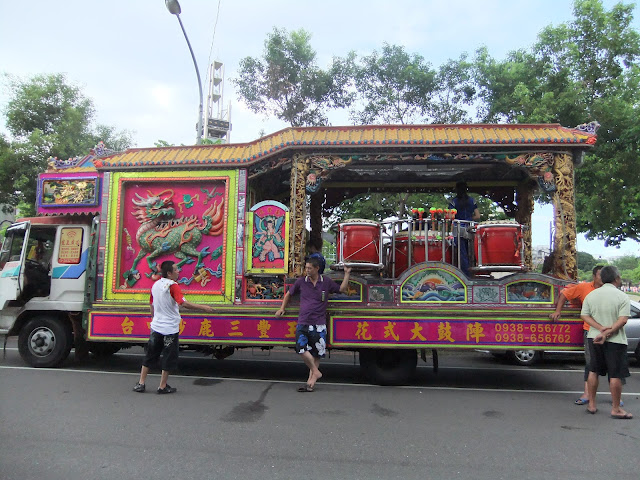Taiwan is not an independent nation. It is still a province of China; this is the reason that there are economic Offices rather than embassies in Taiwan. A government establishing an embassy in Taiwan would be recognizing Taiwan as an independent nation. This would result in great friction and even the threat of war with Mainland China. However the ruling government in Taiwan is the Republic of China and not the People’s Republic of China. The current president Ma Ying Jiu is a part of the KMT party. This party is looking for closer ties to China as opposed to the DPP, which is leaning toward Taiwan independence. The government is a parliamentary government.
In light of Double Tenth day, I want to provide a bit of history about the establishment of the Republic of China.
 |
| Qing Dynasty Art |
The Qing Dynasty was the ruling power of China from 1644 until 1912 when the Empress Dowager Longyu abdicated the thrown on behalf of the emperor. The Republic of China was established on January 1, 1912 with Sun Yat Sen as the first provisional president.
The dynasty was at its strongest point in the mid 18th century. Territory and population increased but after the mid-century military power weakened, there were defeats and massive rebellions and as a result by the mid-nineteenth century the dynasty had declined. The dynasty was overthrown in the Xinhai Revolution resulting in the abdication of the emperor and the establishment of the Republic of China.
In 1900 the Qing dynasty created a modernized army called the “New Army.” They began to manufacture the weapons of modern warfare. One city Wuchang on the Yangtze river was the hub of the military industrial complex of China for that time. However, many of the officers were influenced by the revolutionary ideas of Sun Yat Sen and many joined revolutionary groups, such as the Literary Society.
The Wuchang Uprising
The Wuchang uprising marked the end of the Qing Dynasty It took place on October 10, 1911. The uprising started accidentally, Russian revolutionaries were building bombs in the city of Wuchang in the Hubei province. One of the bombs accidentally exploded resulting in a police investigation. The investigation uncovered a number of Literary Society members within the “New Army.” These men, recognizing that arrest and execution was imminent, staged a coup. The local officials panicked and fled, the Army took control of the local government within the day. The revolutionaries telegraphed other provinces telling them of the coup and urging them declare their independence from the emperor. Within six weeks fifteen provinces had seceded from the empire.
The provisional Government of the Republic of China was established under President Sun Yat Sen on January 1, 1912 and the emperor abdicated on February 12, 1912.
Sun Yat Sen
 |
| Sun Yat Sen |
Chiang Kai Shek
 |
| Chiang Kai Shek |
On June 5, 1926, Chiang became Commander-in-Chief of the National Revolutionary Army (NRA), and on July 27 he launched a military campaign known as the Northern Expedition, to defeat the warlords controlling northern China and unify the country under the KMT.
The Nationalist Government of the Republic of China fought with Communists beginning in about 1927 as Chaing Kai Shek’s soldiers purged thousands of communists out of shanghai. His forces clashed with Mao Ze Dong’s people’s Liberation Army and in 1949, after many losses, fought a final battle in Chengdu, on December 10, 1949, in which Chiang Kai Shek was evacuated to the island of Taiwan
The government of the Republic of China was established on Taiwan with its capitol in Taipei. Chiang Kai Shek served as president reelected a number of times until his death in 1975.
Double Tenth Day
Double tenth day commemorates the Wuchang Uprising which took place on October 10, 1911. It is celebrated in Taiwan by a Military Parade and Fireworks.
Photo Credits: http://www.wikipedia.com/
Other posts you may be interested in:
Taiwanese History: The Chiang Kai Shek Mausoleum
Taiwanese History: Double Tenth Day
Taiwan Travelogue: The Revolutionary Martyrs' Shrine



















